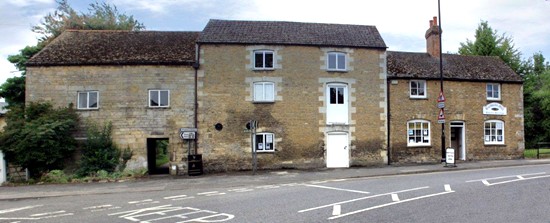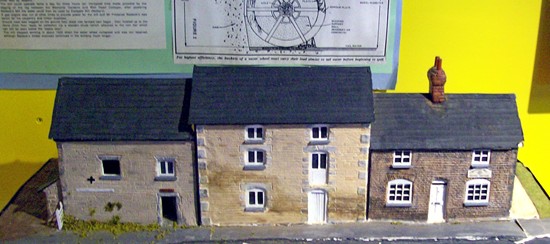|
Baldock's Mill
The Domesday Book
of 1086, the great land survey ordered by William the Conqueror, records that
at least three water mills existed in Bourne at that time out of an estimated 5,000 mills in the whole country. They were owned by Oger the Breton and produced an income of thirty shillings a year. He also had two parts of the profits from another mill that brought in a further five shillings a year. Other landowners in Bourne are also recorded as having "parts of mills", a system we would refer to today as shares, but it is not known how many there were. These values seem insignificant by today's monetary standards but in Norman times they were a most important incomes for the Lords of the Manor.
Maize was also split for chicken feed and horse beans and a flour dresser provided sufficient for the family's own use. Two sets of stones operated on the first floor fed from hoppers on the floor above, the corn being lifted up from the ground floor where it had been previously
delivered by a chain hoist driven, like the stones, by the wooden undershot water wheel. Access to the two upper floors by the miller was by ladders. The mill operated twice a day for three hours and this time was increased by the digging of the leg between the paddock that is now the War Memorial
Gardens and the Wellhead cottage. After powering Baldock's Mill, the water then ran downstream and could be used by Notley's Mill in Eastgate. The mill stopped working about 1924 when the water wheel collapsed. The owner, the Marquess of Exeter, called in experts to inspect the damage but decided not to repair it because of the high costs involved. The wheel and machinery were removed but the mill race that turned the wheel can still be seen within the building, now scheduled Grade II as being of architectural and historic interest. The mill was listed in 1973 and in 1981, Bourne Civic Society sought permission to turn it into a Heritage Centre and Bourne United Charities agreed to lease them the building for a peppercorn rent in order that it would be preserved for community use. This lease was renewed in 2002 for a further 21 years and the full potential of the building in this new role is slowly being realised.
REVISED APRIL 2013 See also The Heritage Centre Mill owners in past times Baldock's Mill in past times A photographic record of Baldock's Mill before restoration The Mill Wheels Restoration Project Producing green electricity A mill for all seasons Baldock's Mill from the rear Baldock's Mill in winter A new lease of life for the old mill by the stream
Go to: Main Index |

